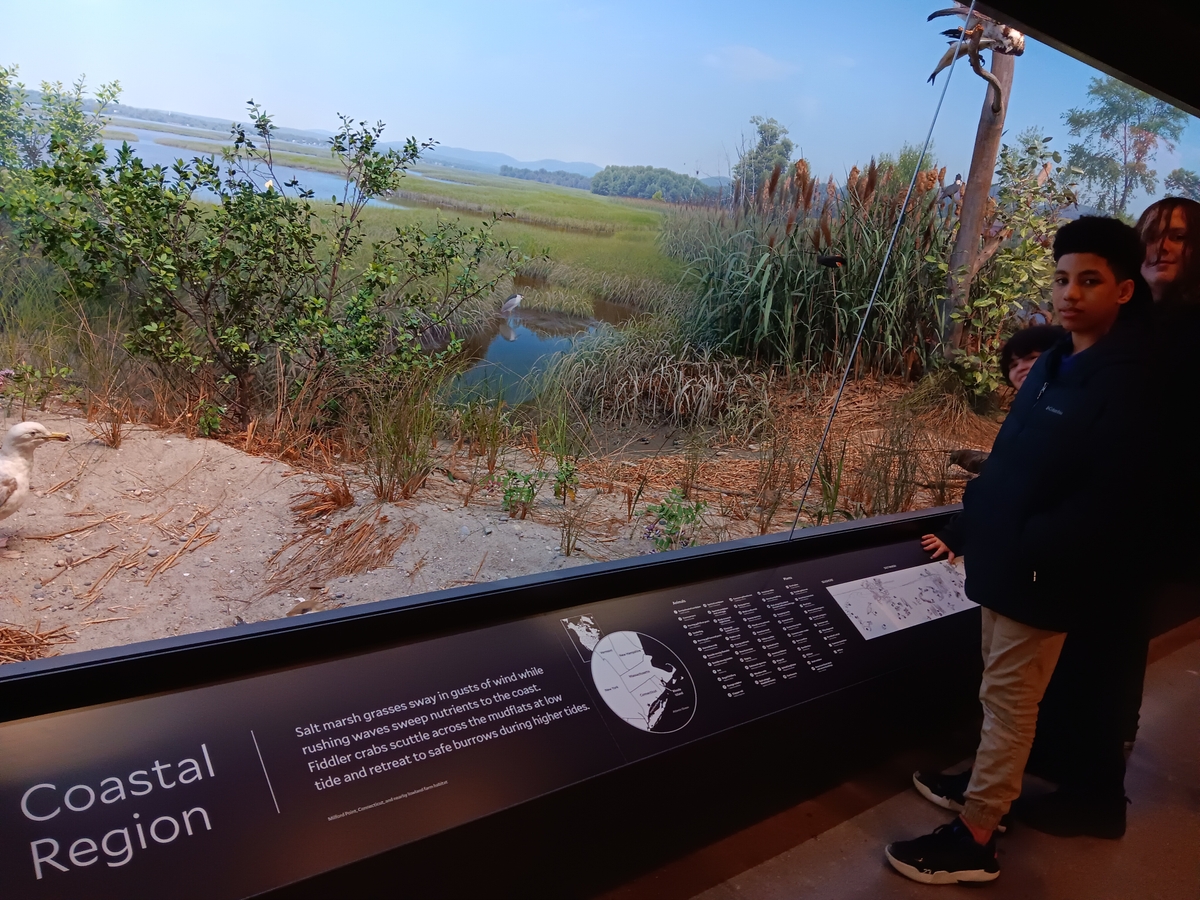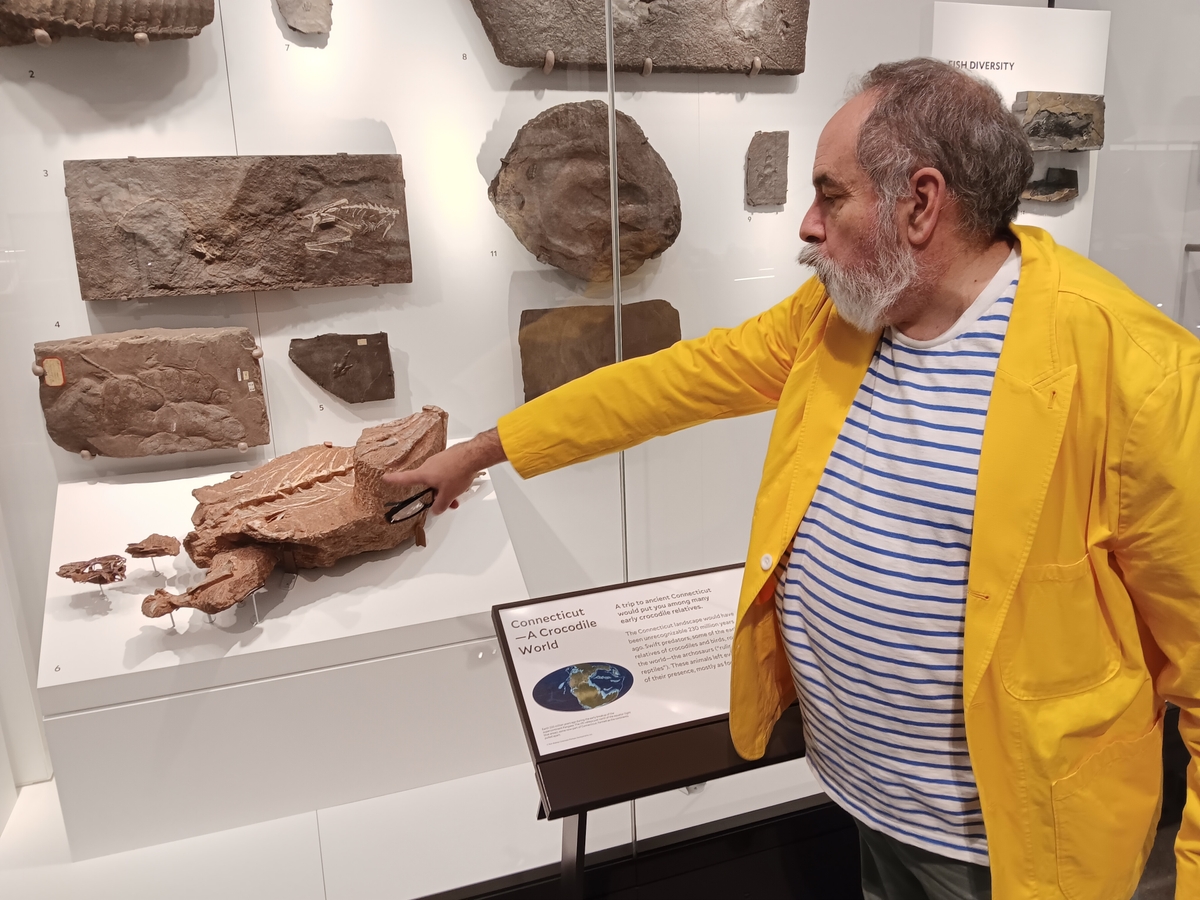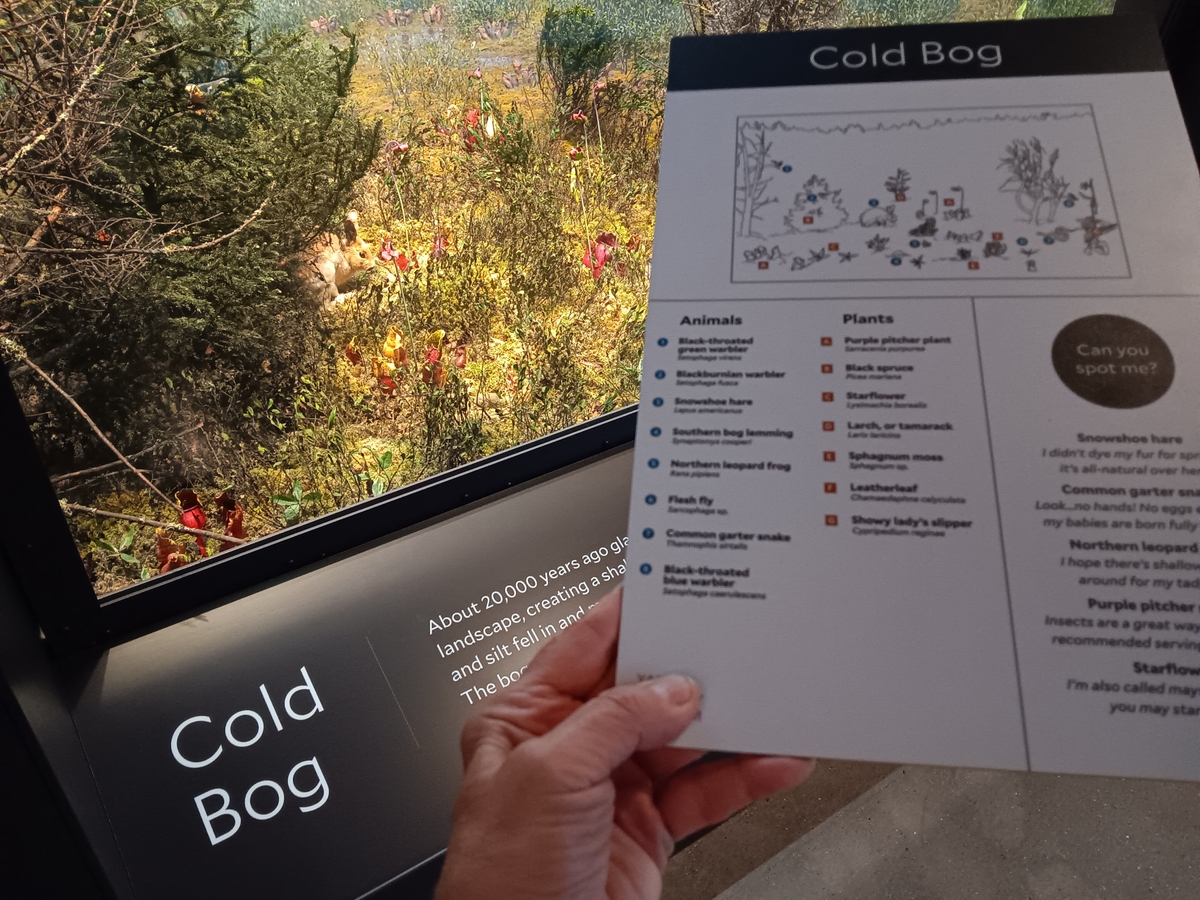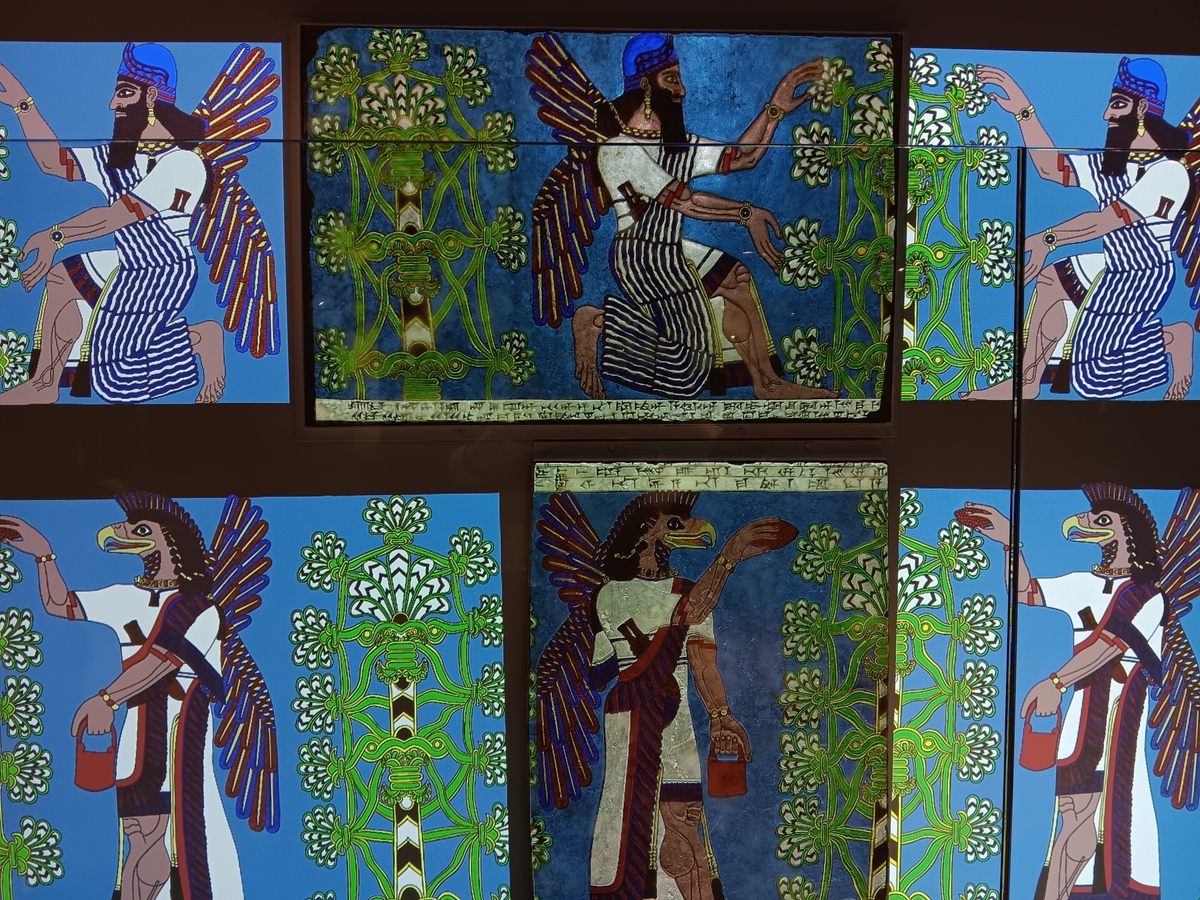
Allan Appel Photo
Michael Ortiz before diorama evoking Connecticut's Long Island shoreline.
“Absolutely magnificent,” eighth grader Michael Ortiz marveled at a representation of the Connecticut shoreline with its marshes, night herons snagging fish, and dozens of other labeled flora and fauna — all as part of one of the newly reopened state history dioramas at the freshly renovated Yale Peabody Museum.
Michael was with his class from Waterbury’s Children’s Community School on Tuesday morning visiting the 170 Whitney Ave. museum.
He was one of an impressive 23,000 people who have visited the museum in the first several weeks since its March 26 reopening, after a four-year closure and $160 million re-do.
Click here for a tour-based overview of the airy new galleries — with light streaming in thanks to 90 new window replacements — and the way human activities over the eons down to today are now full presences in the museum. Thus the human-excluding “natural history” has been formally removed from the new Yale Peabody Museum moniker.
Michael had plenty to say about the re-opened and re-imagined museum as a whole, including: “I love aqua-dinosaurs. I really love all extinct creatures more [than living ones]. They’re beautiful and awesome, but they’re not threatening” because they’re long dead.
This reporter caught up with him in particular on the third floor of the museum, which of the three floors was most recently opened, as of last Friday.
The third floor includes some of the museum’s most venerable, non-dinosaurish displays — which also seemed to possess a kind of new power over Michael and filled the young man with superlatives like those quoted at the top of this article.
Included in the small but enveloping space of the third floor are three Connecticut history-focused dioramas, including one of the Long Island shoreline.
Michael praised the life-likeness of the diorama, including the deep “3‑D” perspective (as another visitor was overhead describing it), how the near drier land mass recedes into the marsh and then onto the sand of the shoreline in the deep distance.
That might have accounted for Michael reporting that “I literally tried to go in there. I didn’t notice the glass!”
What accounts for that, said Director of Public Programs Chris Norris, is the back-drop paintings done by James Perry Wilson in the 1950s that through new systems and renovations have been brought to vibrant new life and light.

Director of Public Programs Chris Norris at Connecticut Valley Dinosaur exhibit.

Specifically Norris pointed to the important new safety glass (which also kept Michael from stepping through) but all new LED lighting (part of 97 miles of new wiring throughout the new Peabody) that is programmable and re-directable, “so the colors pop.”
That’s certainly why another Children’s Community School student Leilani Hathaway declared “Look at the bunny, it looks so real,” as she stood in front of another of the Connecticut dioramas in the room, Cold Bog.
Unlike the shoreline or “Coastal Region” diorama, this one represents a real place, Cornwall Hollow in Litchfield County, Connecticut.
With the colors popping Leiliana and other kids were also staring at the red plants at the base of the display, which turned out to be pitcher plants, among the bug eating critters of the bog that had fascination to nine-year-olds. How insects topple down the slippery sides of the crafty pitchers and fall into the little caldron of sugar at the base which disintegrates them into pitcher food.
All that data is not on the label beneath the diorama, however, but conveyed elsewhere on nearby cards, for example.
The labeling of the diorama — and everything in the museum — is a subtle but essential feature of the success of the renovation. Nowhere, on any main label of a display, are there more than 50 or 60 words, reported Norris.
That represents a cutting by half or more of the number of words on displays in the pre-renovation Peabody.
“In addition to privileging space rather than cramming” in the number and arrangement of the exhibitions, there is also space on those labels, along with carefully thought-through type size and open space on each label that announces, “ ‘Hey, this is not going to be an onslaught of info. Read a little, and learn something key, but most importantly look, and enjoy.’ ”
Or as Norris put it, “We’re leaning into that most visitors are not here to learn by being barraged with information or crammed with many objects.”
In keeping with national trends in streamlining and simplifying of the visitor learning experience, Norris said the labels and panels everywhere in the Peabody convey an idea, he went on, so you can just glance and learn from the easily readable, space-surrounded labels, how, for example, “salt marsh grasses sway in gusts of wind … and rushing waves sweep nutrients to the coast” while fiddler crabs high-tail into their holes to be safe from those tides when high.
“Even if you’re distracted,” said Norris, “even if a kid is pulling on your hand, you can look up and learn and leave knowing more than when you came.
“There’s not less information, but we don’t dress it up all over the panels. “We always ask ourselves, ‘What is the one thing they [the panels] need to say clearly?’”
You could, for example, have learned, almost while cruising with your triplets in the light-filled Burke Hall of Dinosaurs on the first level, that while Connecticut has many interesting tracks of dinosaurs there are few substantial local dinosaur skeletons.

Bas-relief of royal bathhouse as 9th Century BCE Assyrians would have viewed it thanks to revival of ancient colors.
The largest Nutmeg dino skeleton would be #6B in the hall, which was pulled from a site that is now a parking lot of a shopping center in Manchester.
See what I mean about perspective?
No wonder Michael Ortiz declared, as his class left the Connecticut dioramas room to move onto the Living Lab areas, with the flittering fish and the silent beautiful butterflies, “Absolutely amazing. I’m coming back here on my own time.”
While the Peabody is also now free, reserving tickets, which are timed, is advisable, although staff said there are almost always some walk-up tickets also available.
Closed only on Mondays, the Peabody is open Tuesdays through Saturdays from 10 to 5:00 p.m.; and Sundays noon to 5:00 p.m.


My first visit to the Peabody I was 7 years old and we had just moved to New Haven from Meriden, where fossilized dinosaur tracks are in Hubbard park that you could walk on. Which to a small child, is extraordinary.
The hall of dinosaurs and the dioramas and the butterflies and birds displays were always the most beloved in the museum. And the gift shop was fantastic with reasonably priced items a child could enjoy that echoed displays in the museum.
Now that the museum has been refreshed and free to the public, so many of the residents and visitors can enjoy all the museum has to offer, on a reasonable sized scale. (The NYC museums are great, but overwhelming.)
I’m waiting for the crowds to slow down, but I hope to visit later this year to see what is new. (If they took out the tripping hazard on the carpet near the corner at the tail of the center dinosaur, I’ll be thrilled.)